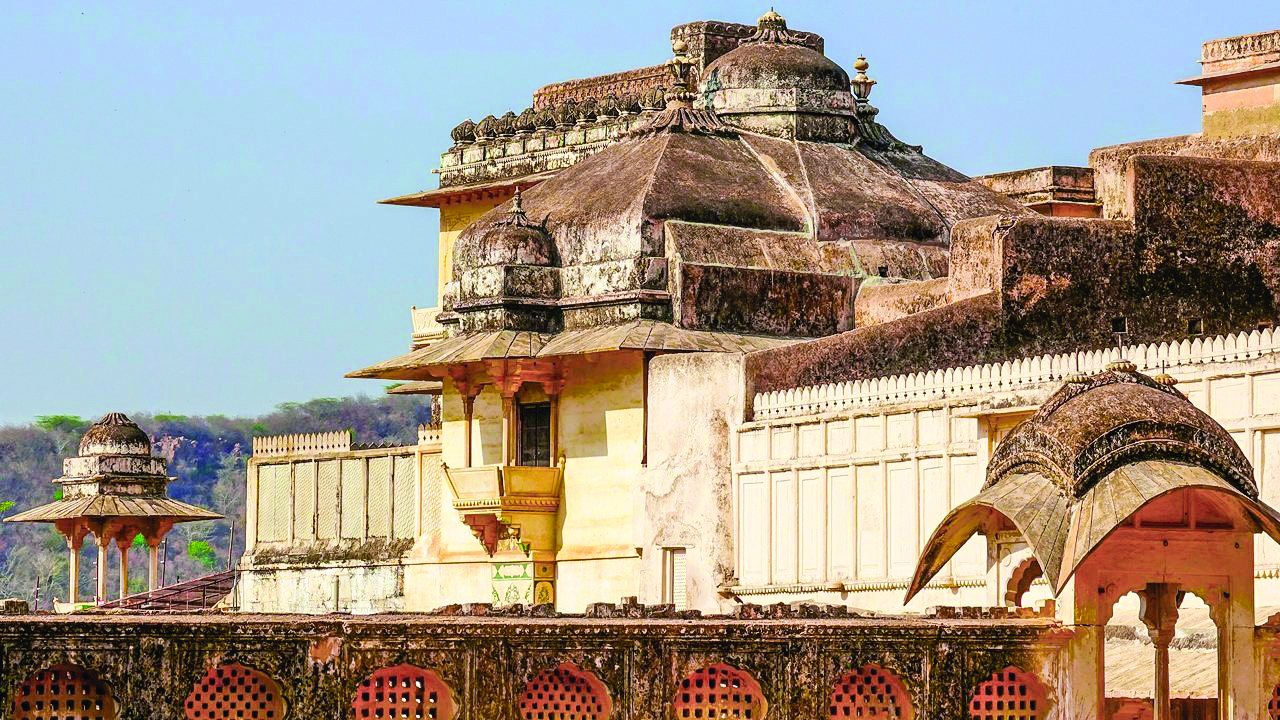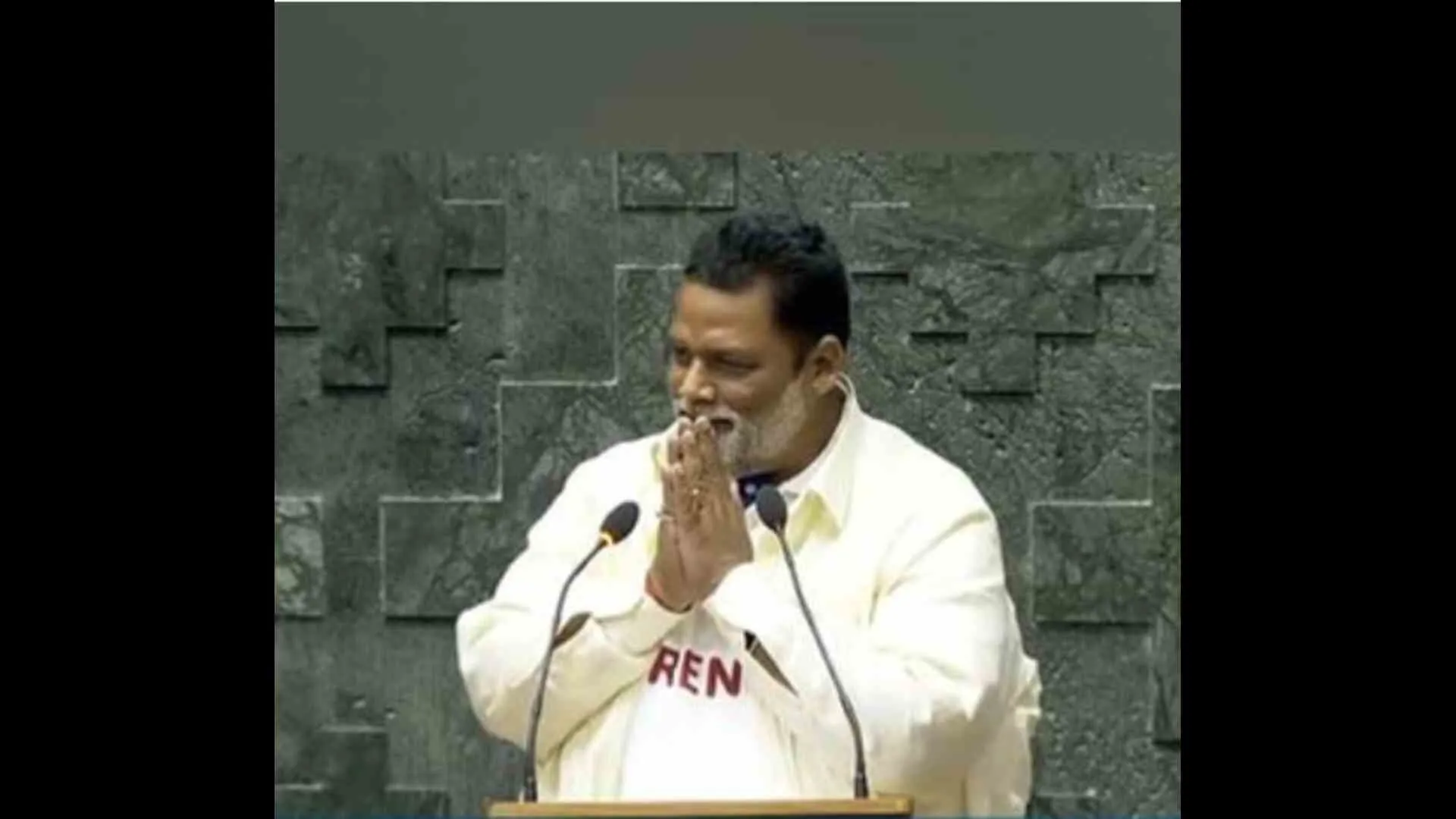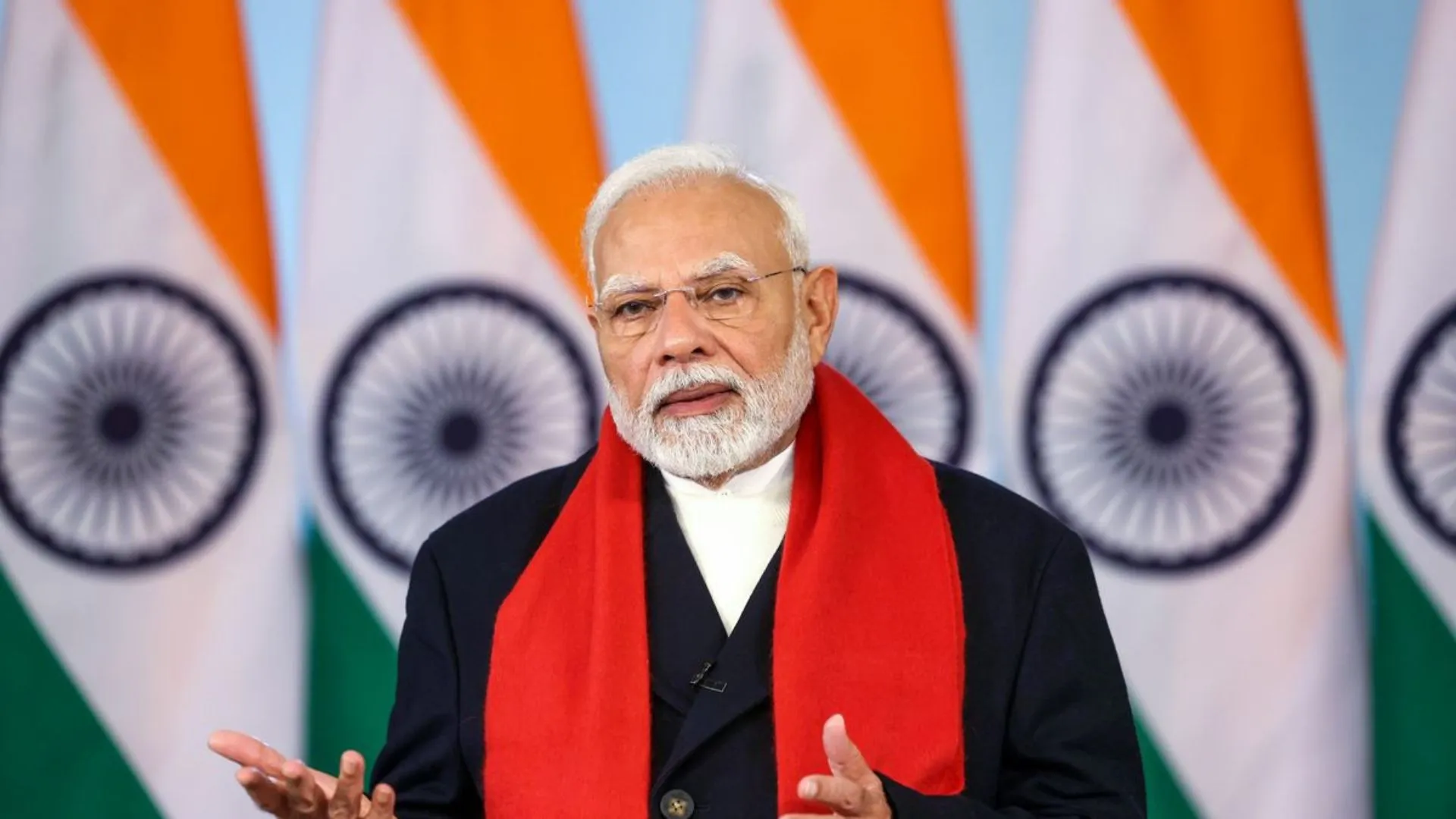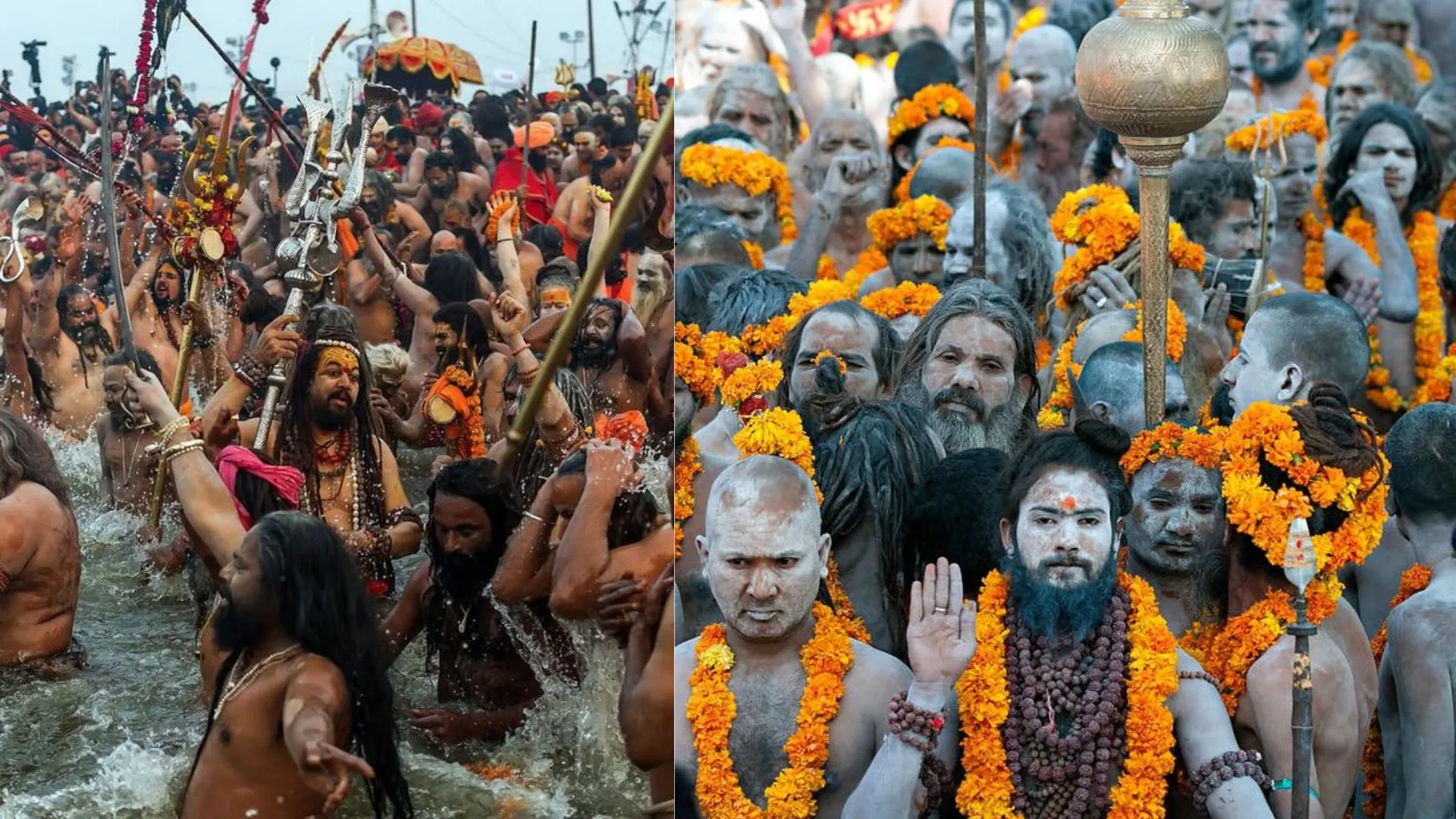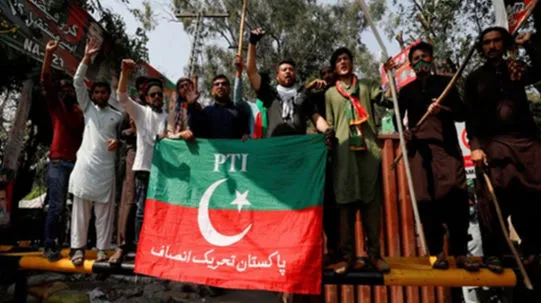Badal Mahal (Cloud Palace) is located amid the bright landscapes of Rajasthan, India, and serves as a tribute to the region’s architectural magnificence and regal tradition. This intriguing palace, located in the historic city of Bundi, exemplifies traditional Rajasthani architecture combined with aspects of grandeur and mystery. Badal Mahal, perched high on a hilltop and erected in the 17th century, provides beautiful views of Bundi and the surrounding area. The name “Badal Mahal,” which translates to “Cloud Palace,” accurately depicts the palace’s lofty elevation and the cold wind that flows through it, giving it the appearance of floating amidst the clouds.
Historical BackgroundBadal Mahal was built during the reign of the Maharaja of Bundi, Rao Raja Ratan Singh, who ruled from 1607 to 1631. Bundi, the capital of the Bundi state in southeastern Rajasthan, was a significant princely state under Rajput rule. During the time of its construction, Bundi was known for its artistic endeavors, including painting, sculpture, and architecture. Badal Mahal was designed to be a royal retreat, where the king could relax, enjoy the surrounding natural beauty, and retreat from the more formal areas of the Bundi Fort.
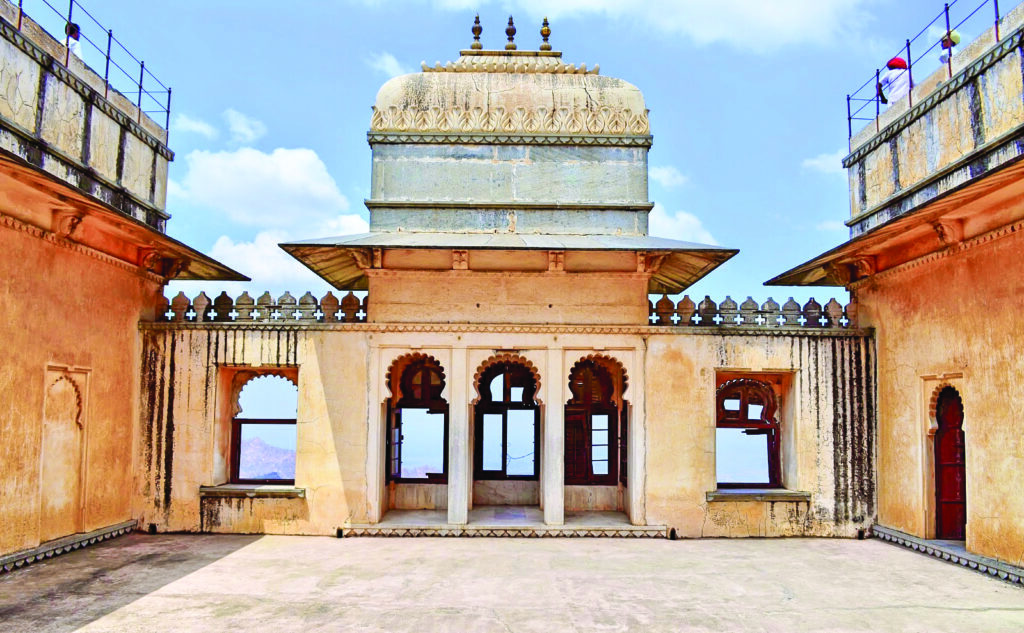
The palace’s location on a high hill within the fort complex offers a unique combination of royal luxury and strategic defense. The Bundi Fort itself, which was constructed around the 12th century, houses several other significant buildings, including the famous Taragarh Fort, which overlooks the city. Badal Mahal’s construction is believed to have been influenced by both the indigenous Rajput and Mughal architectural styles, reflecting a period of cultural blending in Rajasthan.
Architectural SignificanceBadal Mahal is renowned for its distinctive architecture, which combines elements of Mughal and Rajput styles. The palace is a three-story structure that rises majestically from the hilltop, with intricately designed arches, domes, and carvings that echo the splendor of Rajasthan’s royal heritage. The exterior features a mix of stonework, ornamental arches, and large windows, while the interiors are adorned with rich frescoes, paintings, and decorations.
One of the most remarkable features of Badal Mahal is its location. The palace is built on a raised platform within the fort, making it appear to be suspended in the air, with panoramic views of Bundi and the surrounding Aravalli mountain range. This elevated position gives the palace an ethereal quality, particularly when clouds drift past, providing the illusion that the palace is floating amidst the clouds. The name “Badal Mahal” is, therefore, a fitting tribute to the serene and mystic atmosphere created by the surrounding clouds and mist.
The palace is divided into several rooms, each of which has its own unique architectural charm. The interiors are spacious, with intricately designed ceilings, large windows allowing abundant natural light, and ornate marble columns. The murals and frescoes inside the palace depict scenes from the royal court, daily life, and mythological stories, which were a hallmark of Rajput art during the time.
The palace is known for its beautiful blend of colors, including vibrant yellows, reds, and blues, which are a characteristic feature of Bundi’s miniature painting style. The frescoes and murals are often set against dark backgrounds, which enhance the vibrancy of the colors and give the palace an air of mystery and regality.
Strategic importance and symbolismBadal Mahal’s position atop the hill was not just a design choice for aesthetic appeal. It also served a strategic function. The palace provided the rulers with a panoramic view of the entire region, allowing them to keep a watchful eye on any potential invaders or threats. The fort and the palace were part of a well-planned defense system, with various gates, watchtowers, and thick walls that offered protection from enemy forces.
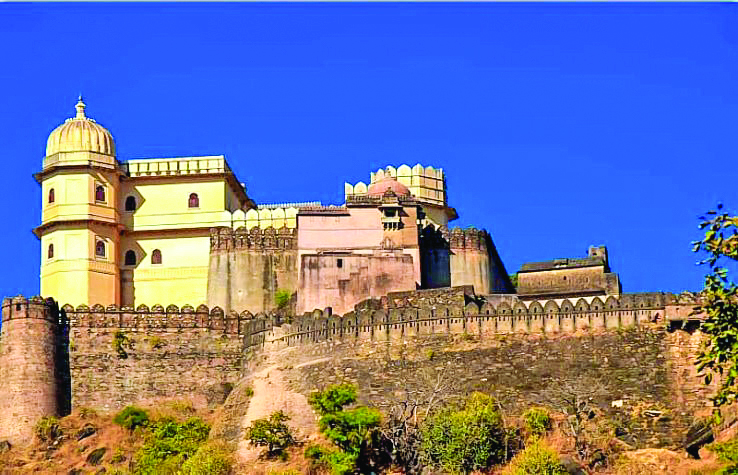
Moreover, the location of Badal Mahal also held symbolic significance. In Rajput culture, the ruler’s residence was seen as a representation of his power and divine connection. By placing the palace on an elevated hill, the Maharajas of Bundi might have been symbolically placing themselves closer to the heavens, which was a common motif in the architecture of the Rajput and Mughal elite. The light, airy quality of the palace, combined with the cool breeze and occasional clouds, gave it an almost celestial feel, reinforcing the divine and sacred nature of the royal family’s authority.
Cultural and artistic importanceBadal Mahal is not just a palace; it is a canvas that showcases the artistic excellence of Bundi. Bundi is known for its distinctive style of miniature painting, and this art form is beautifully captured within the palace’s walls. The frescoes inside Badal Mahal are some of the finest examples of Bundi painting. These paintings often feature intricate details and vivid colors that depict the royal lifestyle, court scenes, and mythological themes.
One of the most famous aspects of Bundi’s artistic heritage is the depiction of animals, particularly birds, in the murals. The artists who worked on the walls of Badal Mahal used intricate brushstrokes and delicate patterns to bring these animals to life. The paintings also include intricate depictions of royal processions, hunting scenes, and religious icons.
The palace’s architectural style and art make it a major attraction for visitors interested in the region’s rich cultural heritage. Bundi itself is known as the “City of Palaces,” and Badal Mahal stands as one of the finest examples of the region’s royal history and artistry.
Badal Mahal Today: A Timeless AttractionToday, Badal Mahal remains an important historical and tourist site in Bundi. Visitors from across the world are drawn to its stunning architecture, panoramic views, and artistic splendor. The palace is a part of the larger Bundi Fort complex, which also includes other important attractions such as the Taragarh Fort, Raniji Ki Baori (Queen’s Stepwell), and the Sukh Mahal.
While much of the palace has remained well preserved, certain parts of the palace are no longer in their original state due to natural wear and tear. However, the most iconic sections of the palace, including the central courtyards and rooms with murals, are still in excellent condition, and they offer visitors a glimpse into the past grandeur of Bundi.
The surrounding landscape, including the tranquil lakes, rolling hills, and bustling streets of Bundi, further enhances the allure of Badal Mahal. The area remains largely unspoiled by modern development, allowing visitors to step back in time and experience the royal lifestyle of a bygone era.
Badal Mahal is an extraordinary monument that encapsulates the glory and charm of Rajasthan’s royal history. It is a place where art, architecture, and nature converge to create an experience that is both regal and tranquil. Whether you are an admirer of history, architecture, art, or simply a lover of beauty, Badal Mahal is a must-visit destination that transports you to an era of opulence and grandeur.
The Cloud Palace’s strategic location, architectural brilliance, and artistic masterpieces offer an unforgettable journey into the past. It is no wonder that Bundi, with its stunning forts, palaces, and stepwells, is considered one of Rajasthan’s most enchanting and culturally rich cities. Badal Mahal continues to stand proudly as a symbol of Rajasthan’s rich cultural legacy, a palace that rises above the city, both literally and metaphorically, to inspire awe and admiration for generations to come.

